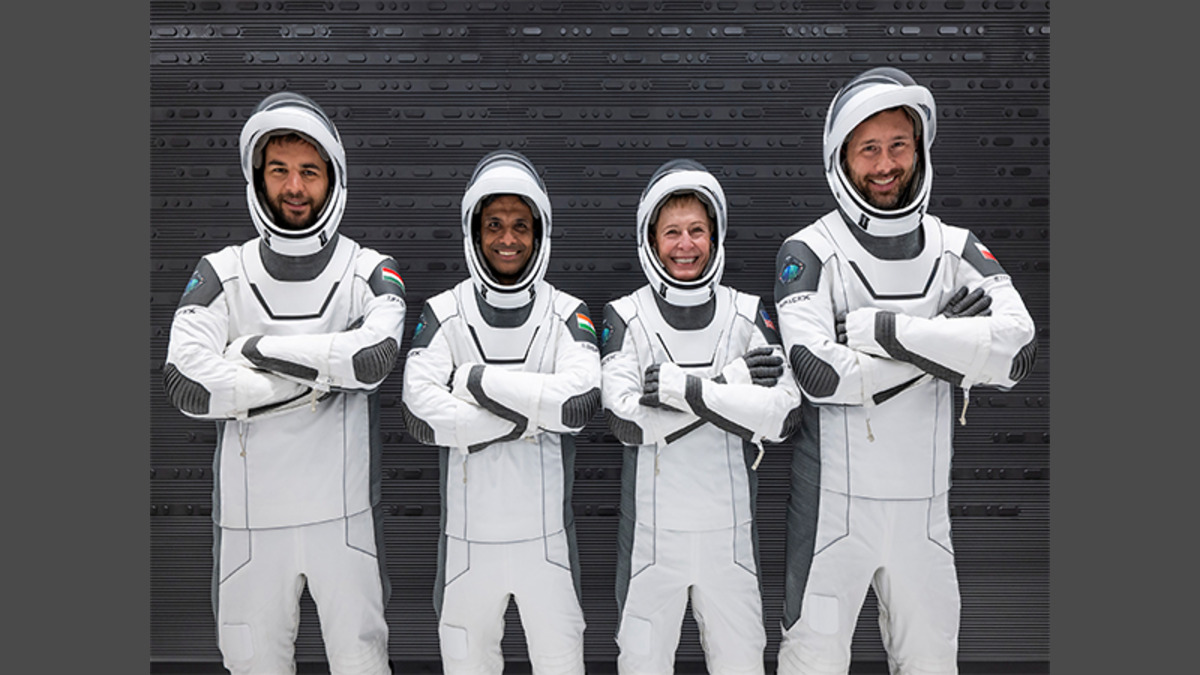The Axiom Mission 4 (Ax-4) crew is officially ready for liftoff as SpaceX confirmed the Dragon spacecraft’s hatch has been sealed and all communication and spacesuit checks are complete. The mission is scheduled to launch at 2:31 a.m. EDT (12:01 p.m. IST) on Wednesday from Launch Complex 39A at NASA’s Kennedy Space Center in Florida.
The four-member international crew will journey to the International Space Station (ISS) aboard a SpaceX Dragon spacecraft, propelled by a Falcon 9 rocket. Docking is expected at 7 a.m. EDT (4 p.m. IST) on Thursday, June 26.
The Ax-4 mission is a significant milestone for multiple nations:
- Group Captain Shubhanshu Shukla of the Indian Air Force will serve as the mission pilot, making him the first Indian to travel to the ISS.
- ESA project astronaut Slawosz Uznanski becomes Poland’s second astronaut since 1978.
- Tibor Kapu becomes Hungary’s second astronaut since 1980.
- The mission is commanded by Peggy Whitson, veteran NASA astronaut and Axiom Space’s Director of Human Spaceflight, who holds the U.S. record for the longest time spent in space.
Originally slated for June 22, the launch was postponed due to recent maintenance on the Russian segment of the ISS. NASA said the delay was necessary to ensure the station was fully ready to receive additional crew members.
NASA, SpaceX, and Axiom Space underscored the mission’s historic nature, noting that this marks the first government-sponsored human spaceflight in over four decades for India, Poland, and Hungary. It also makes Ax-4 the first time astronauts from all three countries will fly together to the ISS.
Beyond its diplomatic significance, Ax-4 will carry out an ambitious slate of more than 60 scientific studies and activities, representing 31 countries, including India, the US, Poland, Hungary, Saudi Arabia, Brazil, Nigeria, the UAE, and several European nations. The experiments will span human physiology, Earth observation, material science, and biological studies, furthering global knowledge in microgravity environments.
The mission is also a step forward for India’s broader space ambitions, aligning with ISRO’s vision of sending an Indian to the Moon by 2040, and laying the groundwork for the country’s upcoming Gaganyaan human spaceflight mission.





